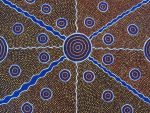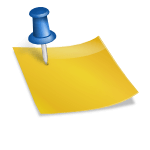This week the Understanding Our World program for primary schools has younger students looking at time passing, both in their own lives and as marked by others, including the seasons recognised by different Aboriginal groups. Older students are looking at how Aboriginal people interacted with the Australian environment, as it changed at the end of the Ice Age, and how they learnt to manage the environment and codified that knowledge into their lore.
 Foundation to Year 3
Foundation to Year 3
This week our standalone Foundation classes (Unit F.1) are thinking about what they were like as babies. They are comparing photographs or drawings of themselves as babies, with how they are now. This is a great week to involve family members and carers into class discussions, if appropriate. Students in multi-age classes and Years 1 to 3 (Units F.5, 1.1, 2.1 and 3.1) , are examining how weather and seasons change throughout the year and comparing our system of seasons with those used by different groups of Aboriginal people in different parts of Australia. Students can compare these seasons to the weather where they live and think about how they would divide the year into seasons that work where they live. Students can also discuss changes in weather over time with older members of the community.
Years 3 to 6
 Older students, having followed the ancestors of Aboriginal people all the way to Australia, are now examining how the climate changed in Australia after the Ice Age, and how this affected Aboriginal people. They learn how Aboriginal people adapted to their changing environment and learned to manage it in a sustainable way. This vitally important knowledge about how to live with, and manage, the Australian environment, was codified into Aboriginal lore and custom and handed down in stories and laws, from generation to generation. Students start to examine the idea of Country/Place, in this context.
Older students, having followed the ancestors of Aboriginal people all the way to Australia, are now examining how the climate changed in Australia after the Ice Age, and how this affected Aboriginal people. They learn how Aboriginal people adapted to their changing environment and learned to manage it in a sustainable way. This vitally important knowledge about how to live with, and manage, the Australian environment, was codified into Aboriginal lore and custom and handed down in stories and laws, from generation to generation. Students start to examine the idea of Country/Place, in this context.

 Foundation to Year 3
Foundation to Year 3
The material is much more interesting. When I discussed a topic later in the term, I found that the students…
Laura Davidson, Teacher